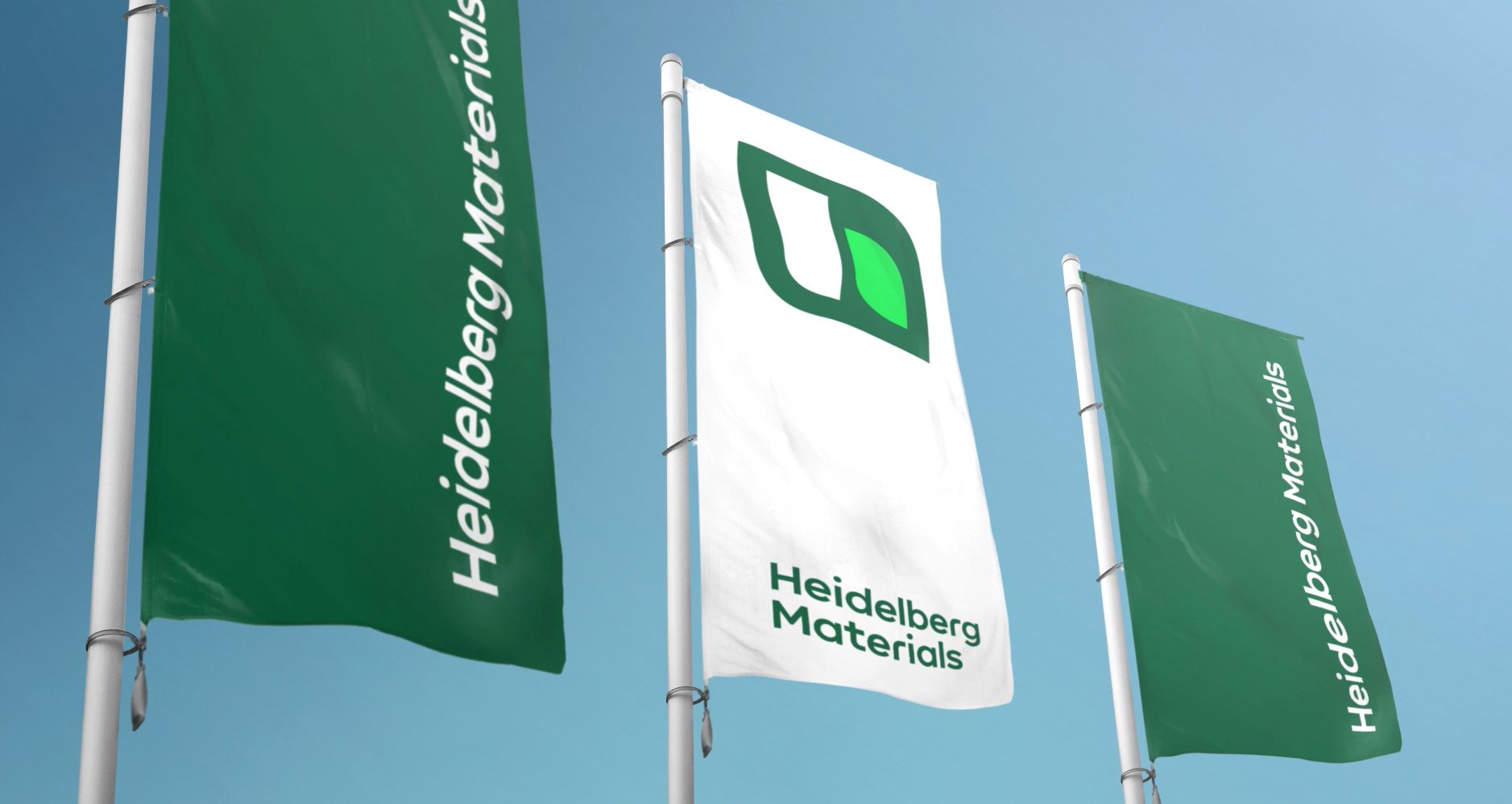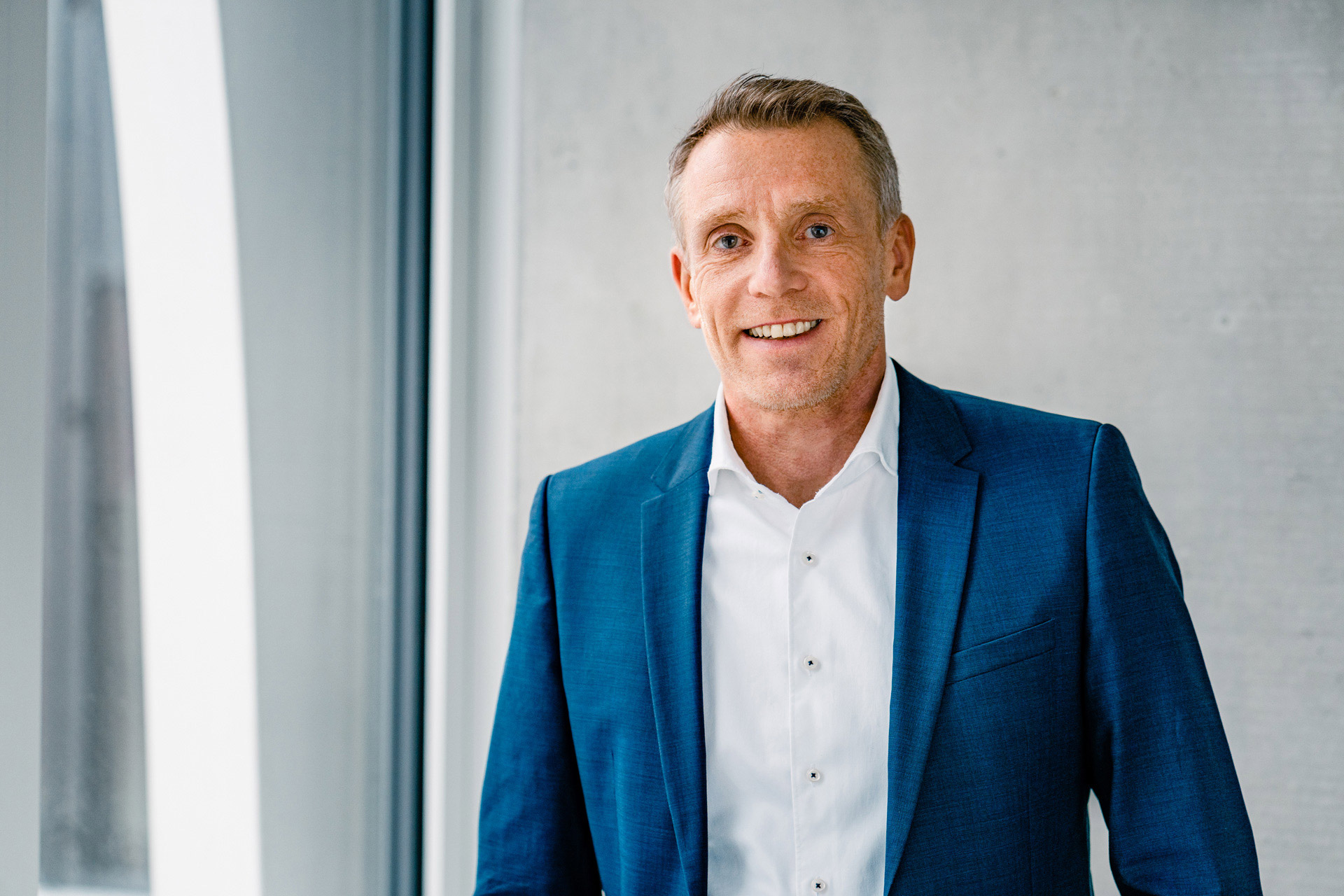HeidelbergCement sets new standards for sustainability targets: By 2030, specific CO₂ emissions to be reduced by a further 30%
Most ambitious CO₂ reduction target in the sector – emissions to be reduced by almost half to 400 kg CO₂/t CEM compared with 1990, this means a further decrease of 30% compared to 2021
Strong focus on sustainable products and solutions – by 2030, half of the Group revenue is to be generated with sustainable products
Leading the way in scaling carbon capture, utilisation, and storage (CCUS) technologies –CCUS projects that have already been launched are expected to achieve a cumulative reduction of 10 mt CO₂ by 2030
New ambitious financial targets by 2025 – revenue growth around 5% p.a. on a comparable basis, RCOBD margin 20-22%, ROIC >10%, cash conversion >45%, leverage ratio 1.5x-2.0x
Financing linked with climate goals of the EU taxonomy – over 70% of debt to be covered by sustainable financial instruments by 2025
HeidelbergCement is accelerating its transformation towards a sustainable future. At this year’s Capital Markets Day, HeidelbergCement today presented new medium-term sustainability and financial targets under the motto “Concrete Promises”.
“We are rigorously driving forward the transformation of HeidelbergCement to become the world's most sustainable company in our sector,” says Dr Dominik von Achten, Chairman of the Managing Board of HeidelbergCement. “We have the ambition, speed, knowledge, technologies, and partners to lead the necessary change process in our sector. Our focus is on expanding our portfolio of sustainable products, reducing our CO₂ emissions quickly and significantly, proving that CO₂-free products are possible on a large scale, and creating a circular economy by consistently applying the principles of circularity. Our new sustainability targets for 2030 illustrate this ambition.”
Dr Dominik von Achten adds: “At the same time, we are convinced that we can also achieve this change in an economically sustainable way. We have created the conditions for this in recent years. We are building on a strong basis and are better positioned today than ever. In the coming years, we want to continue to grow profitably above the market and further increase the return on invested capital.”
New climate targets and sustainable products as game changers for profitable growth
Dr Nicola Kimm, member of the Managing Board and Chief Sustainability Officer of HeidelbergCement, says: “We are significantly tightening our climate targets. With the reduction of specific net CO₂ emissions to 400 kg/t of cementitious material by 2030, we are establishing the most ambitious goal in the sector.” This target corresponds to a reduction of 47% compared with the base year 1990 and is significantly higher than the previous reduction target of 33% for 2030 in the same period. Compared to 2021, the company aims to reduce CO₂ emissions by a further 30%. Thus, in the next eight years, CO₂ emissions are to decrease more strongly in percentage terms than in the last three decades. “We are focusing on the optimisation of products and processes, as well as in particular on the expansion of CO₂ capture, utilisation, and storage (CCUS)”, adds Dr Nicola Kimm. The company aims to achieve net zero emissions by 2050 at the latest. At HeidelbergCement, the reduction of CO₂ emissions is also embedded in the remuneration of the Managing Board and all bonus-eligible employees worldwide.
At the product level, the focus is on the widescale adoption of ever lower carbon cements and concrete, the rapid acceleration of the use of recycled materials, and the use of new technologies such as 3D concrete printing. By 2030, HeidelbergCement aims to increase its revenue with sustainable products to a share of 50% of Group revenue. Only recently, HeidelbergCement expanded its sustainable concrete portfolio in Germany under the EcoCrete brand. With the “ecolution” programme, the company will in future record the revenue of all products that meet at least one of four defined sustainability criteria.
Rapid scaling of CO₂ capture technologies
CCUS is a crucial component of HeidelbergCement's climate strategy. In dealing with the unavoidable process emissions from clinker production, the company is focusing on the expansion and scaling of its CCUS initiatives: In order to gain experience with all important CO₂ capture technologies, HeidelbergCement is further developing different technologies and cooperating with qualified partners. Promising projects can thus be scaled up to industrial-scale promptly and cost-effectively. Solely with CCUS projects that have already been launched, the company aims to save 10mt of CO₂ cumulatively by 2030.
“CCUS is the only way so far to be able to produce CO₂-free cement and concrete,” says Dr Dominik von Achten. “We are very well positioned here and are thus able to reduce our operating expenses, also through lower costs for CO₂ allowances. This is a clear competitive advantage for HeidelbergCement and an opportunity to sustainably improve margins, especially in Europe.”
New financial targets underpin sustainability strategy
“We have already achieved our financial targets ahead of schedule, which we had promised in our Beyond 2020 strategy. Now we are sharpening them – in addition to our new sustainability targets,” says Dr Dominik von Achten. On a comparable basis, the company aims to increase revenue by around 5% p.a. over the next few years. The RCOBD margin should be between 20-22% by 2025. In addition, HeidelbergCement is raising its original target of achieving a return on invested capital (ROIC) of “clearly above 8%” and now aims to achieve a ROIC of over 10%. Net investments, including investments in sustainable products, processes, and CCUS technologies, are expected to be €1.1 billion p.a. on average. In this way, the company strives to use the previous investment framework as far as possible for the sustainability transformation, even with the use of the new technologies. HeidelbergCement aims to increase the cash conversion, i.e. the ratio of free cash flow to the result from current operations before depreciation and amortisation, prospectively to over 45%. As before, the leverage ratio is to be between 1.5x-2.0x.
HeidelbergCement will also become a leader in the sector in the area of financing. René Aldach, Chief Financial Officer of HeidelbergCement, explains: “By 2025, more than 70 % of our debt is to be covered by sustainable financial instruments. Among other things, we are relying on a bond programme that is the first in the industry to be aligned with the climate goals of the EU taxonomy.”
For HeidelbergCement, helping to shape the transformation and taking innovative paths means assuming responsibility towards the environment and society, as well as developing solutions that are convincing sustainably. “We drive the change for the benefit of our customers, our shareholders, our employees, and society as a whole,” said Dr Dominik von Achten, concluding his presentation today.
The presentations of the Capital Markets Day 2022
Also today, HeidelbergCement published its Sustainability Report 2021
About HeidelbergCement
HeidelbergCement is one of the world’s largest integrated manufacturers of building materials and solutions, with leading market positions in aggregates, cement, and ready-mixed concrete. More than 51,000 employees at nearly 3,000 locations in over 50 countries deliver long-term financial performance through operational excellence and openness for change. At the center of actions lies the responsibility for the environment. As forerunner on the path to carbon neutrality, HeidelbergCement crafts material solutions for the future.

